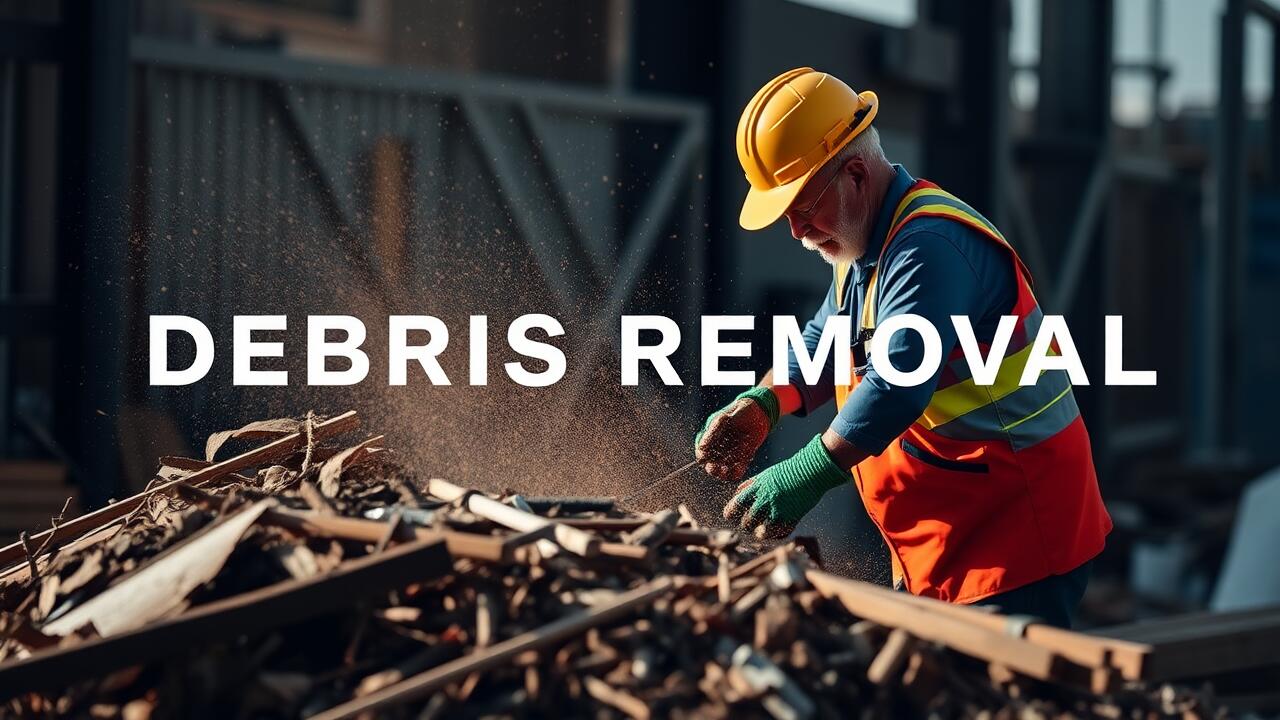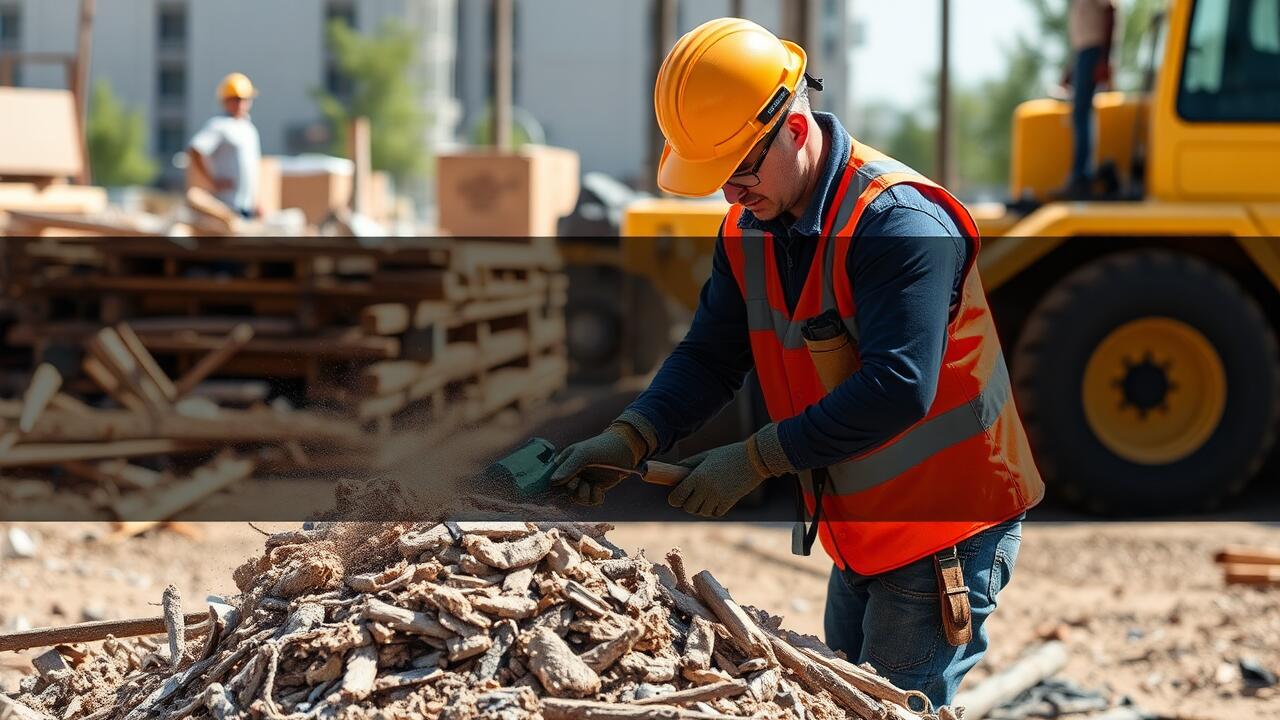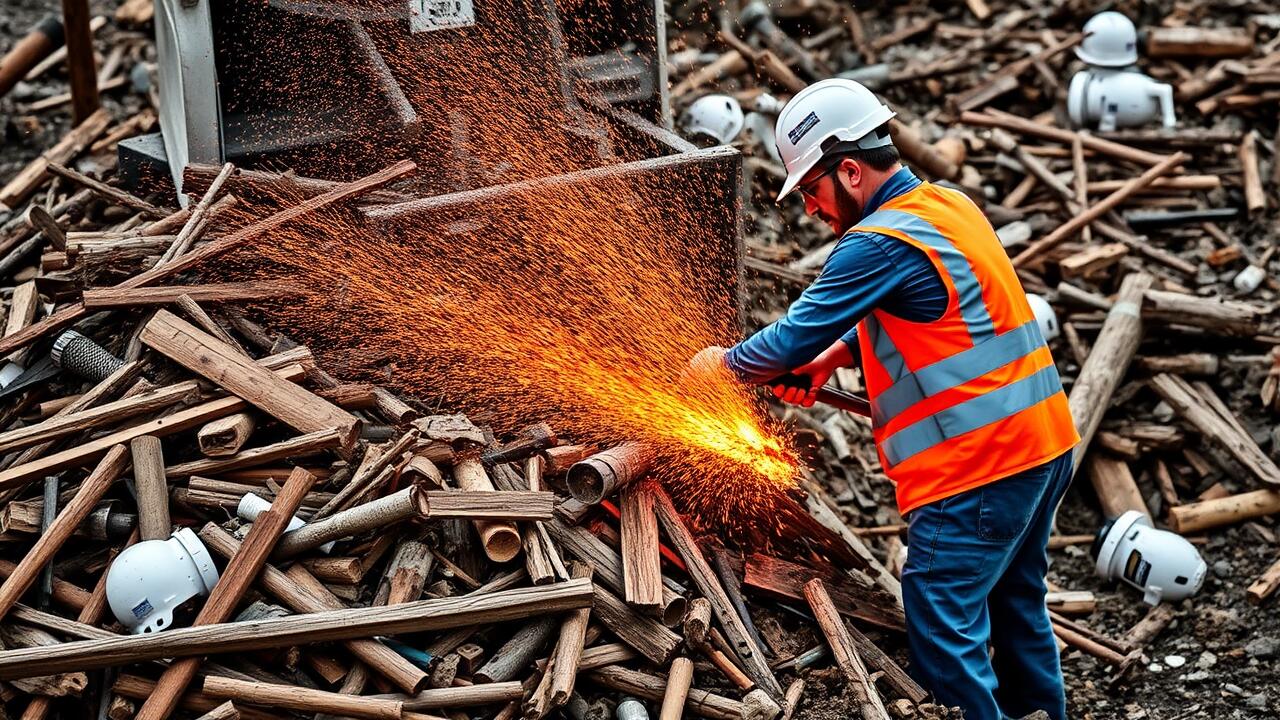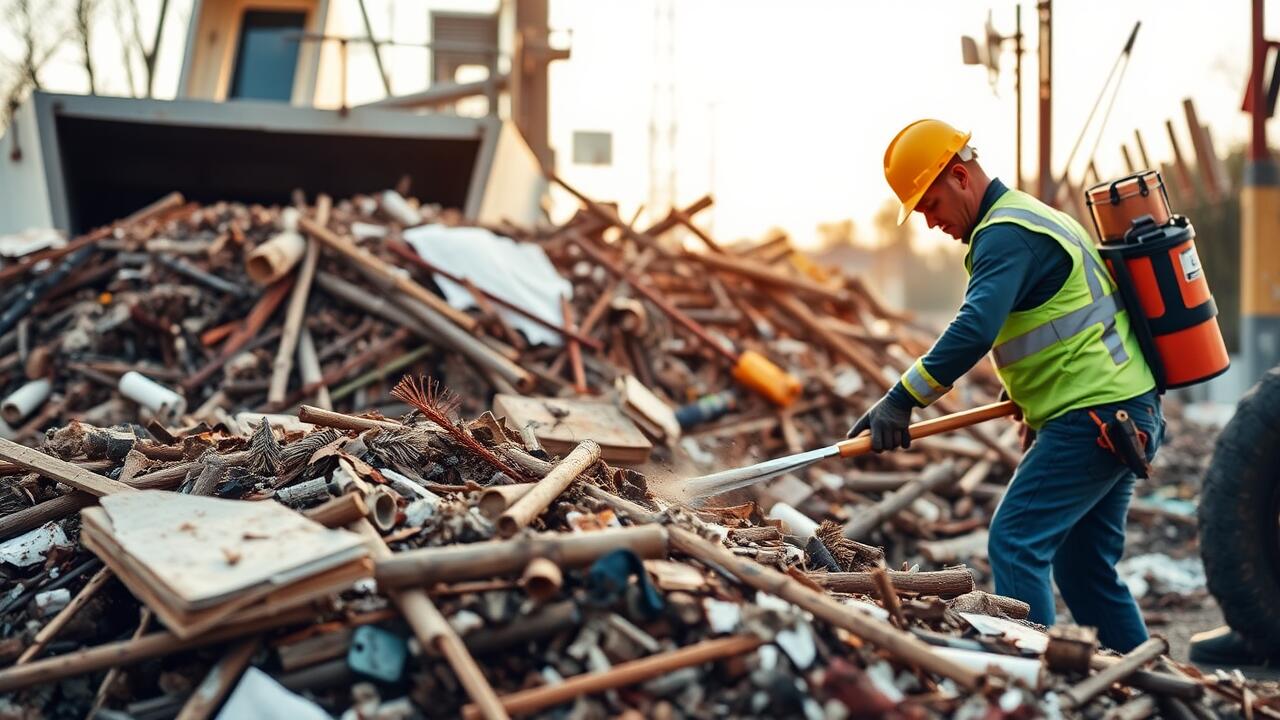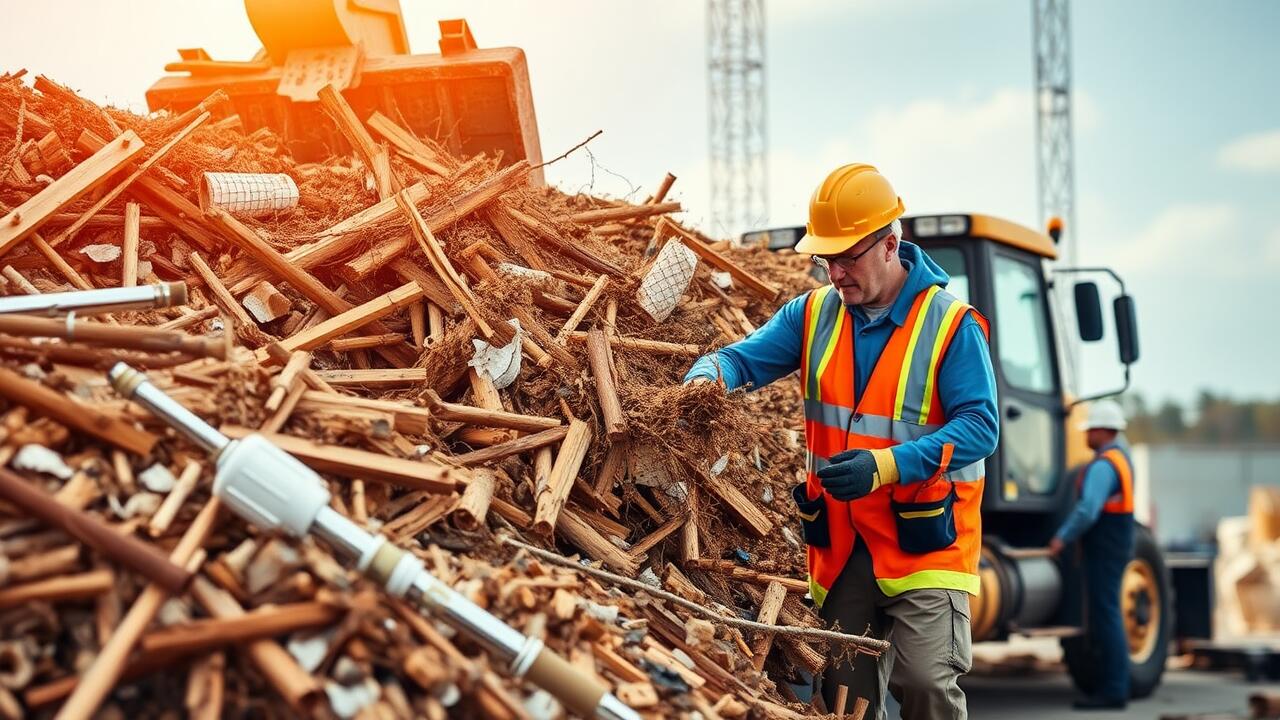
Safe Handling of Hazardous Waste
Proper handling of hazardous waste is crucial on construction sites to ensure both worker safety and environmental protection. Workers should be educated about the types of hazardous materials they might encounter. Identifying substances such as lead, asbestos, or solvents early on can prevent accidental exposure. Using appropriate personal protective equipment (PPE) like gloves, respirators, and goggles is necessary to mitigate risks associated with handling these materials. Regular training sessions can reinforce safe practices and help workers feel confident in their ability to manage these hazards.
Site managers play a key role in overseeing the safe handling of hazardous waste. A clear plan must be established for the management of any potentially hazardous materials, including labeling and documentation. In areas where hazardous waste is generated, designated collection points should be established to avoid cross-contamination. Companies such as Alhambra, Phoenix Construction Debris Removal can provide services for the safe removal and disposal of hazardous waste, ensuring compliance with local regulations. Implementing these measures contributes to a safer work environment and minimizes environmental impacts.
Best Practices for Workers and Site Managers
Workers and site managers play a crucial role in the safe handling of hazardous waste in construction. Training programs should be mandatory, ensuring all personnel understand the risks associated with hazardous materials. Regular workshops and safety drills can keep safety protocols at the forefront of employees' minds. Clear signage and accessible safety information also contribute to a culture of safety on the job site.
In addition to training, proper communication is essential. Workers should feel comfortable reporting potential hazards or unsafe conditions without fear of repercussions. Utilizing reliable services, such as Alhambra, Phoenix Construction Debris Removal, can assist in managing waste effectively and responsibly. Establishing a communication plan that includes regular safety meetings reinforces the importance of vigilance and collaboration among all team members.
Storage Solutions for Hazardous Waste
Effective storage solutions for hazardous waste are crucial to ensure safety on construction sites. Containers must be specifically designed for the type of waste being stored, featuring labels that clearly identify their contents. Additionally, the storage area should be secure and compliant with local regulations to prevent unauthorized access. Adequate ventilation is also essential, especially for volatile substances, to mitigate potential health risks for workers on-site.
In urban areas like Alhambra, Phoenix Construction Debris Removal offers innovative storage solutions tailored for hazardous materials. Their services include providing specialized bins and ensuring proper segregation of waste types to minimize cross-contamination. Regular inspections and maintenance of storage facilities further enhance safety and compliance, ensuring that hazardous waste is managed effectively throughout the construction process.
Compliance and Safety Measures
Compliance with regulations and safety measures is essential for managing hazardous waste in construction. Workers must be well-informed about the potential hazards associated with different types of waste materials. Proper training programs should be implemented to ensure all personnel understand how to identify hazardous substances, handle them safely, and use personal protective equipment effectively. Regular safety audits can help identify gaps in training or compliance, ensuring that workers remain vigilant and informed.
In addition, employing reliable services like Alhambra, Phoenix Construction Debris Removal can streamline the process of hazardous waste management. These services ensure that waste is collected, stored, and disposed of in accordance with local and federal regulations. Integrating professional removal services not only enhances safety on the job site but also minimizes the risk of legal penalties associated with improper disposal. Engaging with experienced teams fosters a culture of safety and accountability among construction workers.
Disposal Methods for Hazardous Waste
Disposal methods for hazardous waste in construction play a critical role in ensuring environmental safety and compliance with regulations. Options vary depending on the type of waste, with incineration, chemical treatment, and landfill disposal being the most common techniques. Proper classification of waste is essential before deciding on a disposal method, as this ensures that hazardous materials are handled appropriately. Engaging with certified waste disposal facilities is a key step in the process to avoid penalties and potential risks to public health.
An effective strategy for managing hazardous waste disposal includes collaborating with experienced removal services such as Alhambra, Phoenix Construction Debris Removal. These professionals specialize in the safe transportation and disposal of hazardous materials and adhere to the stringent regulations set forth by local and federal authorities. Utilizing their expertise helps construction firms maintain compliance while minimizing liability and ensuring that hazardous waste does not pose a risk to the surrounding environment.
Approved Techniques and Facilities
Proper disposal of hazardous waste in construction requires adherence to approved techniques and facilities designed to mitigate environmental risks. Facilities dedicated to hazardous waste treatment are equipped with advanced technology to safely process and neutralize harmful materials. Utilizing such facilities ensures compliance with regulatory standards and contributes to sustainable project practices. When selecting a disposal facility, contractors should verify the permit status and capabilities of the facility to handle specific types of hazardous waste, such as lead, asbestos, or solvents.
One example of a service in this arena is Alhambra, Phoenix Construction Debris Removal, which specializes in the safe collection and disposal of hazardous construction materials. They follow local guidelines and provide detailed documentation for all waste handled, supporting construction firms in maintaining compliance. By utilizing approved facilities like these, construction projects can significantly reduce their environmental footprint while enhancing worker safety through effective waste management protocols.
FAQS
What is considered hazardous waste in construction?
Hazardous waste in construction includes materials that are harmful to human health or the environment, such as lead, asbestos, solvents, and certain chemicals used in building processes.
How can construction workers safely handle hazardous waste?
Workers can safely handle hazardous waste by wearing appropriate personal protective equipment (PPE), following safety protocols, and being trained on proper handling techniques for specific hazardous materials.
What are the best practices for site managers in managing hazardous waste?
Site managers should implement a comprehensive hazardous waste management plan, provide training for workers, ensure proper labeling and storage of materials, and regularly conduct safety audits to maintain compliance.
What storage solutions are recommended for hazardous waste on construction sites?
Recommended storage solutions include using designated, labeled containers that are compatible with the waste type, ensuring proper ventilation, and keeping storage areas away from high-traffic zones to prevent accidents.
What are the approved disposal methods for hazardous waste in construction?
Approved disposal methods include transporting the waste to licensed hazardous waste treatment facilities, recycling materials when possible, and following local regulations for disposal to ensure environmental safety.
